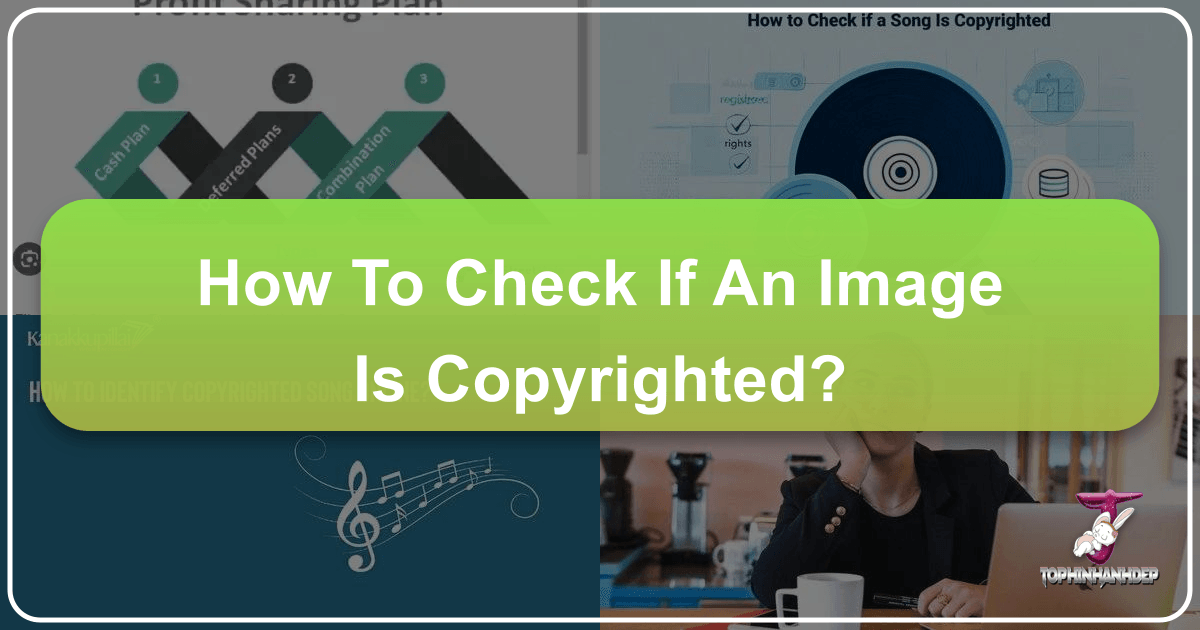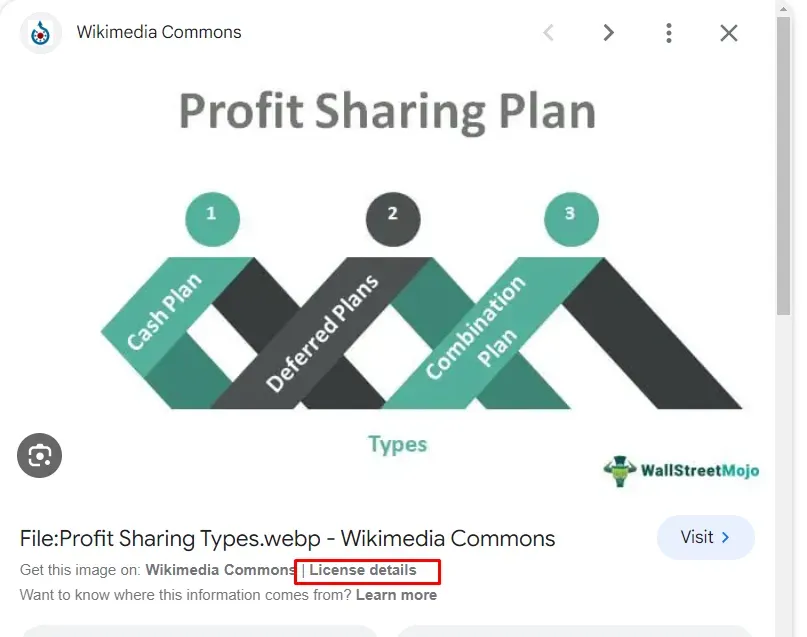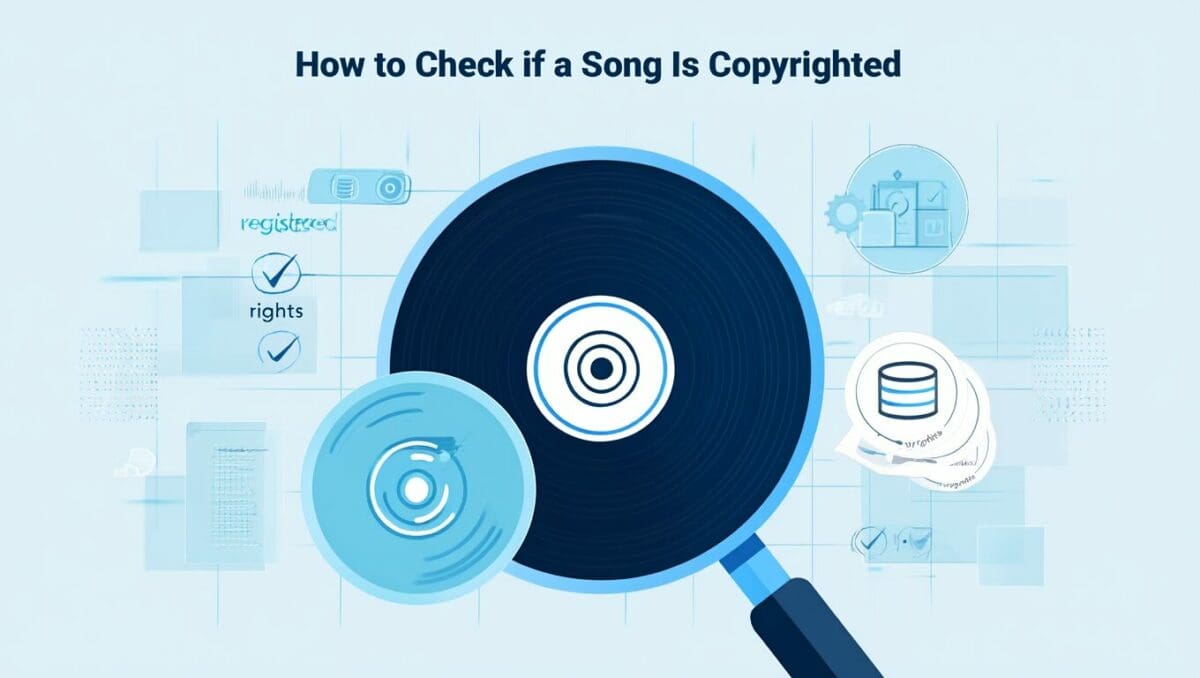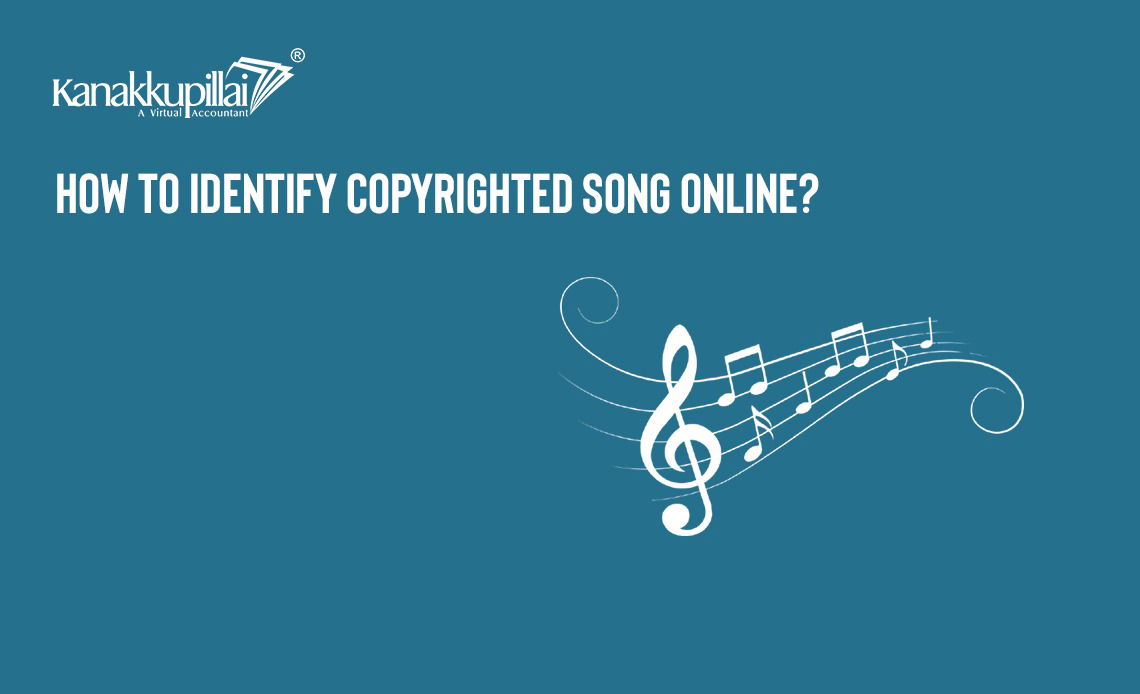Navigating the Visual Landscape: Your Comprehensive Guide to Checking Image Copyrights

In today’s hyper-visual digital world, images are everywhere. From the stunning wallpapers and backgrounds that adorn our devices, to the aesthetic and emotive photography gracing blogs and social media feeds, visual content drives connection and communication. Platforms like Tophinhanhdep.com, with its vast collections spanning Nature, Abstract, Sad/Emotional, and Beautiful Photography, offer an unparalleled feast for the eyes and a rich resource for creative projects. The temptation to simply “grab” an image that perfectly captures your vision is undeniable. However, this convenience comes with a significant caveat: not every image you encounter online is free for the taking.

Using someone else’s image without proper authorization is a serious offense, constituting a violation of copyright laws in most countries worldwide. The repercussions can be severe, ranging from cease and desist letters to hefty fines, damaging lawsuits, and even the complete cessation of your project or business operations. For individuals and businesses alike, understanding and respecting image copyright is not just a legal obligation but an ethical imperative that fosters a vibrant and fair creative ecosystem.

This comprehensive guide will equip you with the knowledge and tools to confidently determine if an image is copyrighted and, crucially, how to use visual content legally and responsibly. We’ll delve into practical methods for identifying copyright holders, explore legitimate avenues for acquiring and using images, and highlight how resources like Tophinhanhdep.com can be your ally in ethical content creation, whether you’re seeking high-resolution stock photos, inspiration for digital photography, or powerful visual design elements.
The Indisputable Reality: Why Every Image is (Likely) Copyrighted
Before diving into how to check for copyright, it’s vital to grasp a fundamental principle: virtually every image is copyrighted from the moment it’s created. This includes everything from a professional’s meticulously composed nature photography to a quick snapshot taken with a smartphone. The creator automatically holds the exclusive rights to reproduce, distribute, display, and create derivative works from their original creation. Unlike patents or trademarks, copyright registration is not typically a prerequisite for protection; it simply exists.

Therefore, the initial presumption should always be that an image is copyrighted. The real challenge, and the focus of this guide, lies in identifying who holds that copyright and understanding the specific terms under which you might be permitted to use it. This diligent approach safeguards you from unintentional infringement and upholds the rights of creators who dedicate their time, talent, and resources to producing the visually compelling content we all appreciate.
Unmasking the Owner: Practical Steps to Identify Copyright Status
Figuring out who truly owns an image can feel like a detective mission, but armed with the right strategies, you can significantly increase your chances of success. Our journey into responsible image sourcing begins with these essential investigative techniques.
Looking for Image Credits or Contact Information
The simplest and most direct way to identify an image’s owner is often to look for explicit attribution. When you discover an image online, whether it’s a striking abstract wallpaper or a serene nature background, scrutinize the immediate vicinity for any captions, footnotes, or accompanying text that might mention the photographer, artist, or copyright holder.
- Captions and Credit Lines: Many professional websites, blogs, and online portfolios conscientiously include credit lines directly below or adjacent to images. These might state “Photo by [Artist Name]” or “[Company Name] © [Year]”.
- About Pages or Contact Sections: If a credit is generic, or if the image appears on a personal blog, navigate to the website’s “About Us,” “Contact,” or “Terms of Use” pages. These sections often provide details about content ownership and how to request usage.
- Metadata Display: Some websites, particularly those showcasing digital art or high-resolution photography, may have integrated features that display basic metadata (such as copyright information) when you hover over or click on an image.
Once you find this information – be it an artist’s name, an email address, or a link to their digital portfolio – you have a direct line to the source. This intel allows you to respectfully reach out to the image owner to discuss potential usage, inquire about licensing fees, or negotiate mutually beneficial terms. Remember, a polite and professional inquiry is often the first step toward a legal and collaborative use of their creative work.
The Clear Warning: Watermarks
A watermark is one of the most unambiguous indicators that an image is copyrighted and that its creator intends to protect their intellectual property. These translucent overlays, often containing text (such as a name or company logo) or a subtle pattern, are strategically placed across an image to deter unauthorized use.
- What a Watermark Signifies: Seeing a watermark is akin to encountering a “do not touch” sign. It’s a clear declaration of ownership and a visual deterrent against theft. For platforms focusing on digital photography and visual design, like Tophinhanhdep.com, watermarks are an essential tool for creators to protect their beautiful photography and digital art as they share it.
- The Peril of Removal: Under no circumstances should you attempt to remove a watermark using image editing software, even if Tophinhanhdep.com offers advanced “Image Tools” like converters or optimizers. Doing so constitutes a blatant and willful act of copyright infringement. Not only is it illegal, but if discovered, it serves as strong evidence of intent to bypass copyright, which can lead to significantly harsher penalties in a legal dispute. Respecting watermarks is a cornerstone of ethical visual content usage.
Peeking into the Image’s DNA: Checking Metadata (EXIF Data)
Many creators, especially photographers, embed crucial information directly into the image file itself. This “Image’s DNA” is known as metadata or EXIF (Exchangeable Image File Format) data. It’s a treasure trove of details that can include the camera model, date and time of capture, exposure settings, and, crucially, copyright information and the owner’s name.
- Accessing Metadata on Your Computer:
- Windows Users: Right-click on the image file, select “Properties,” and then navigate to the “Details” tab. You’ll often find sections for “Copyright” or “Author.”
- Mac Users: Open the image in “Preview,” click on “Tools” in the menu bar, then “Show Inspector,” and finally the “ⓘ” icon. The “EXIF” tab (or general “More Info” tab) may reveal the copyright owner’s name and a comprehensive copyright notice.
- Using Specialized Image Tools: While Tophinhanhdep.com’s “Image Tools” like compressors or AI upscalers might process image data, dedicated metadata viewers (often built into image editing software or available as standalone utilities) can provide a more thorough breakdown. For creators sharing high-resolution photography, embedding accurate metadata is a professional standard that facilitates proper attribution and protection.
While metadata can be a strong indicator, it’s not foolproof. Knowledgeable users or certain platforms might strip this information from images upon upload, intentionally or unintentionally. Therefore, metadata should be one piece of a larger investigative puzzle.
The Digital Bloodhound: Reverse Image Search
When direct credits, watermarks, or metadata prove elusive, a reverse image search becomes your most powerful investigative tool. This technology allows you to upload an image or paste its URL to find where else it appears across the web, often leading you back to its original source or creator.
- How to Conduct a Reverse Image Search (using Google Images as an example):
- Visit Google Images: Go to images.google.com.
- Click the Camera Icon: Locate and click the small camera icon in the search bar.
- Upload or Paste: You’ll have two options: “Paste image URL” if the image is online, or “Upload an image” if you have it saved on your computer.
- Analyze Results: Google will display a list of websites where that image, or visually similar images, appear. Carefully sift through these results. Look for the earliest appearance, a photographer’s portfolio, a stock image site, or a website with clear attribution.
- Beyond Google: While Google Images is a popular choice, other reverse image search engines exist (e.g., TinEye). Some services, like those designed for copyright monitoring, offer even more sophisticated AI-powered tracking. For users of Tophinhanhdep.com looking for visual inspiration or high-resolution images, performing a reverse image search on a potential candidate can confirm its origin and help you ensure ethical usage. It’s a crucial step in respecting the “Digital Art” and “Beautiful Photography” found online.
The Official Record: Searching Copyright Databases
If your preliminary investigation yields some clues, such as a potential creator’s name or a specific title for the image, official copyright databases can be your next stop. The U.S. Copyright Office Public Catalog, for instance, functions as a digital library for registered copyrighted works.
- How to Use the Database: You can search by the photographer’s name, the title of the image, or keywords related to its content. If the work has been officially registered, you might stumble upon definitive copyright registration information.
- Important Caveat: It’s crucial to remember that copyright protection begins the moment an image is created. Registration with a copyright office is an optional step that provides additional legal benefits and remedies to the creator in cases of infringement. Therefore, not finding an image in the database does not mean it is free for public use or that it lacks copyright protection. It simply means the creator chose not to formally register it. If your search here comes up empty, don’t conclude the image is public domain. Continue your research or, as a last resort, decide not to use the image.
The Golden Rule: When in Doubt, Don’t Use It
After exhausting all the above methods, if you remain uncertain about an image’s copyright status or cannot definitively identify the owner, the safest and most ethical course of action is to simply not use the image. Copyright owners often actively monitor the internet for unauthorized use of their work, and ignorance is rarely a valid defense in a legal dispute.
Instead, turn to readily available, legally compliant alternatives. Reputable platforms that specialize in stock photos, like Tophinhanhdep.com (if it were a stock site) or similar services, offer extensive libraries of high-quality images where usage rights are clearly defined and easily acquired. These resources provide a wealth of options, from stunning wallpapers and backgrounds to aesthetic and thematic collections, ensuring you can find suitable visuals without risking legal entanglements. This approach fosters a responsible creative environment where “Image Inspiration & Collections” can thrive ethically.
Mastering Legal Image Usage: Navigating Permissions and Licenses
Having mastered the art of identifying copyrighted images, the next critical step is understanding how to legally incorporate them into your projects. While the ideal scenario is often to create your own original content (which we’ll discuss), there are several legitimate pathways to use existing copyrighted images without fear of legal repercussions.
Obtaining Direct Permission from the Copyright Owner
The most straightforward and respectful approach to using a copyrighted image is to simply ask for permission. This principle is fundamental to ethical content creation and fosters a collaborative spirit within the creative community.
- The Process of Requesting Permission:
- Identify the Owner: Utilize the methods discussed earlier (credits, watermarks, metadata, reverse image search) to find the copyright holder.
- Craft a Clear Email: Write a polite and concise email. Include the following:
- Your Identity: Who you are and what your project entails.
- Image Identification: Clearly describe or attach the image you wish to use, including its URL if found online.
- Intended Use: Explain precisely how, where, and when you plan to use the image (e.g., “for a blog post on Tophinhanhdep.com about nature photography,” “as a background for a presentation,” “in a commercial advertisement”).
- Terms of Use: Ask about their terms for usage, including any fees, attribution requirements, or limitations.
- Be Patient and Respectful: Understand that the owner may say “no,” may charge a fee, or may take time to respond. Respect their decision, whatever it may be. A “yes” might also lead to a valuable creative connection!
- Document Everything: Always keep a record of your communication, including the request and the permission granted (preferably in writing). This serves as your legal proof of authorization. For artists seeking to incorporate elements of digital art or photo manipulation into their work, direct permission ensures original creations are respected.
Purchasing a License from Stock Image Platforms
For those who frequently require high-quality images or prefer a streamlined process, purchasing a license from a reputable stock image website is an excellent solution. These platforms act as intermediaries, managing the rights to vast libraries of images and offering them for use under specific licensing terms. Tophinhanhdep.com, if it were to offer stock photography, would exemplify such a resource, providing access to its collections of high-resolution, aesthetic, and thematic images.
- How Stock Photography Works:
- Subscription Models: Many platforms offer monthly or annual subscriptions, granting access to a certain number of downloads or unlimited access to their library.
- Per-Picture Fees: Alternatively, you can often purchase individual licenses for specific images.
- Types of Licenses: It’s crucial to understand the different license types:
- Royalty-Free (RF): Often a one-time fee for broad, perpetual usage rights, though specific restrictions might still apply (e.g., limited print runs for merchandise).
- Rights-Managed (RM): Licenses are granted for specific uses (e.g., web use, print in a specific region, for a defined period), and fees vary based on these parameters.
- Editorial Use Only: Images that can only be used for news, commentary, or educational purposes, not for commercial advertising.
- Reading the Fine Print: Always thoroughly read and understand the terms and conditions of the license you purchase. While these licenses generally free you from worrying about direct copyright infringement, they come with stipulations regarding how you can use the images, modifications allowed, and distribution limitations. For example, using a Tophinhanhdep.com “Beautiful Photography” image for a commercial billboard might require a different license than using it for a personal blog background. This diligence ensures compliance and leverages the full potential of stock photos.
Maximizing Creative Commons (CC) Licensed Images
Creative Commons (CC) licenses offer a flexible framework that allows creators to share their work with specific permissions, making it accessible to a wider audience while still retaining some rights. These licenses are a bridge between full copyright and the public domain, making them a popular choice for artists on platforms fostering community and sharing, much like Tophinhanhdep.com encourages “Image Inspiration & Collections.”
- Finding CC-Licensed Images: Many online communities and repositories, like Tophinhanhdep.com (if it were to host community-contributed content with CC licenses), allow users to filter searches for CC-licensed content.
- Understanding CC License Types:
- CC0 (Public Domain Dedication): The creator waives all rights, placing the work directly into the public domain. These can be used freely.
- CC BY (Attribution): You can use, adapt, and share the work, but you must credit the original creator.
- CC BY-SA (Attribution-ShareAlike): Similar to BY, but if you adapt or build upon the work, you must license your new creation under the same CC BY-SA license.
- CC BY-ND (Attribution-NoDerivatives): You can use and share the work, but you must credit the creator and cannot make any modifications.
- CC BY-NC (Attribution-NonCommercial): You can use, adapt, and share the work with attribution, but only for non-commercial purposes.
- CC BY-NC-SA (Attribution-NonCommercial-ShareAlike): Combines non-commercial and share-alike conditions with attribution.
- Always Credit, Always Read: The golden rule for CC licenses is to always provide proper attribution (as specified by the license) and to meticulously read the specific terms attached to each image. For instance, if you’re taking a “Nature” photo from a CC collection to create a “Digital Art” piece through photo manipulation, ensure the license permits derivatives and commercial use if applicable. Misinterpreting a CC license can still lead to infringement.
The Ultimate Freedom: Creating Your Own Images
The most effective way to avoid copyright issues entirely is to generate your own original visual content. This approach grants you complete ownership and creative control, transforming you from a consumer of images into a producer. Tophinhanhdep.com celebrates this spirit, providing inspiration through “Photo Ideas” and “Trending Styles” to empower users in their own creative journey.
- Methods for Creating Original Images:
- Photography: With the advanced cameras now packed into smartphones, anyone can capture high-quality photos. Experiment with different subjects (nature, abstract patterns, emotional scenes), lighting, and compositions. For aspiring photographers, Tophinhanhdep.com can be a source of “Beautiful Photography” to inspire your own high-resolution shots.
- Graphic Design and Digital Art: Utilize free or paid design tools like Canva, GIMP, Adobe Photoshop, or Illustrator to create unique graphics, illustrations, and digital paintings. Explore different “Editing Styles” to develop a distinct visual signature. Tophinhanhdep.com, with its focus on “Visual Design” and “Creative Ideas,” offers a rich wellspring of inspiration for developing your aesthetic.
- Photo Manipulation: If you start with your own photos or legally licensed stock photos, you can transform them through photo manipulation to create entirely new “Digital Art” pieces. The key is that the foundational elements are legally sourced.
- Commissioning Artists: If you need something specific but lack the skills or time, hire a freelance artist. Clearly define the terms of ownership for the commissioned work in your contract, ensuring you obtain the necessary rights for your intended use.
- Ethical AI Image Generation: While AI Upscalers (as might be found in Tophinhanhdep.com’s “Image Tools”) can enhance images, using AI for image generation presents a new frontier. Ensure that the AI models you use are trained on legally sourced data and that your use of the generated output complies with the platform’s terms and copyright law. The copyright status of AI-generated content is an evolving legal area, so proceed with caution and verify terms.
By creating your own images, you inherently own the copyright, eliminating the need for permissions, licenses, or navigating complex usage terms. This empowers you with ultimate creative freedom and ensures your projects are built on a foundation of legal integrity.
Tophinhanhdep.com: A Partner in Ethical Visual Content Creation
Tophinhanhdep.com, with its diverse offerings, is ideally positioned to be a vital resource for anyone navigating the complex world of visual content ethically. Our platform is more than just a collection of images; it’s a hub for inspiration, tools, and best practices that encourage responsible digital citizenship.
Leveraging Tophinhanhdep.com’s Collections for Inspiration and Legal Content
At Tophinhanhdep.com, we understand the power of visual storytelling. Our curated collections of Wallpapers, Backgrounds, Aesthetic images, Nature shots, Abstract art, Sad/Emotional photography, and Beautiful Photography are designed to inspire and facilitate your creative endeavors. When you seek “Image Inspiration & Collections” for your mood boards or thematic projects, Tophinhanhdep.com can serve as your starting point.
While Tophinhanhdep.com focuses on inspiration, we advocate for users to understand the copyright implications of any image they wish to use. We guide you towards ethical practices, encouraging you to:
- Seek Licensed Alternatives: If an image on Tophinhanhdep.com inspires you but isn’t explicitly free for use, we encourage you to search for similar high-resolution stock photos on reputable platforms that offer clear licensing options.
- Draw Inspiration, Don’t Copy: Use our “Photo Ideas” and “Trending Styles” to fuel your own photography and “Digital Art” projects, creating original content that reflects your unique vision while respecting existing works.
Utilizing Tophinhanhdep.com’s Image Tools Responsibly
Our suite of “Image Tools” – including Converters, Compressors, Optimizers, AI Upscalers, and Image-to-Text features – are powerful assets for enhancing and managing your visual content. However, like any powerful tool, they must be used responsibly and ethically.
- Enhancing Owned or Licensed Content: Our AI Upscalers can transform your own low-resolution photographs into stunning high-resolution images, perfect for wallpapers or large prints. Use our Compressors and Optimizers to prepare your ethically sourced images for web use without compromising quality. These tools are designed to amplify your creations or images for which you have secured legitimate usage rights.
- Avoiding Infringement: Never use these tools to bypass copyright protections. Do not attempt to remove watermarks, or to “upscale” a clearly copyrighted image for which you have no permission, hoping to obscure its origin. This undermines the very purpose of legal compliance and respect for creators.
Fostering a Culture of Visual Design Integrity
Tophinhanhdep.com is committed to promoting integrity in “Visual Design.” We believe that graphic design, digital art, and photo manipulation thrive when built upon a foundation of respect for intellectual property. Our platform aims to be a resource for “Creative Ideas” that encourage original thought and ethical execution.
- Educating Our Community: We strive to educate our users about copyright best practices, ensuring that the beautiful photography and digital art shared or inspired by Tophinhanhdep.com are used in a manner that supports artists and creators.
- Inspiring Originality: By showcasing diverse “Thematic Collections” and highlighting various “Editing Styles,” we aim to spark creativity that leads to new, original works, reducing the temptation to infringe upon existing copyrights.
The Last Word: Diligence and Due Diligence
In the vibrant, ever-expanding universe of digital imagery, diligence is your most reliable armor against the pitfalls of copyright infringement. The sheer volume of stunning images available on platforms like Tophinhanhdep.com, offering everything from serene nature backgrounds to captivating abstract art, makes it easy to overlook the legal intricacies of their use. However, overlooking these details can transform a moment of creative inspiration into a legal nightmare of fines, lawsuits, and damaged reputations.
Breaking copyright laws is not a minor oversight; it’s a serious offense with significant legal and financial consequences. For anyone operating in the digital realm, especially those whose work revolves around visual content—be it for personal blogs, professional websites, or social media campaigns—understanding how to identify and respect copyright is absolutely essential. It safeguards your business from grinding to a halt due to legal action and protects your integrity as a creator and a user of digital media.
Therefore, before you click, download, or publish any image, put on your detective hat and conduct your due diligence. Verify ownership, understand usage terms, and always, always err on the side of caution. Embrace the wealth of options available for legal image acquisition—whether through direct permission, licensed stock photos, Creative Commons resources, or, ideally, by creating your own unique and original visual masterpieces.
At Tophinhanhdep.com, we champion a world where creativity flourishes ethically. We invite you to explore our rich collections for inspiration, utilize our powerful image tools responsibly, and contribute to a digital landscape where every artist’s work is valued and protected. Be informed, be responsible, and let your visual creations shine legally and brilliantly.